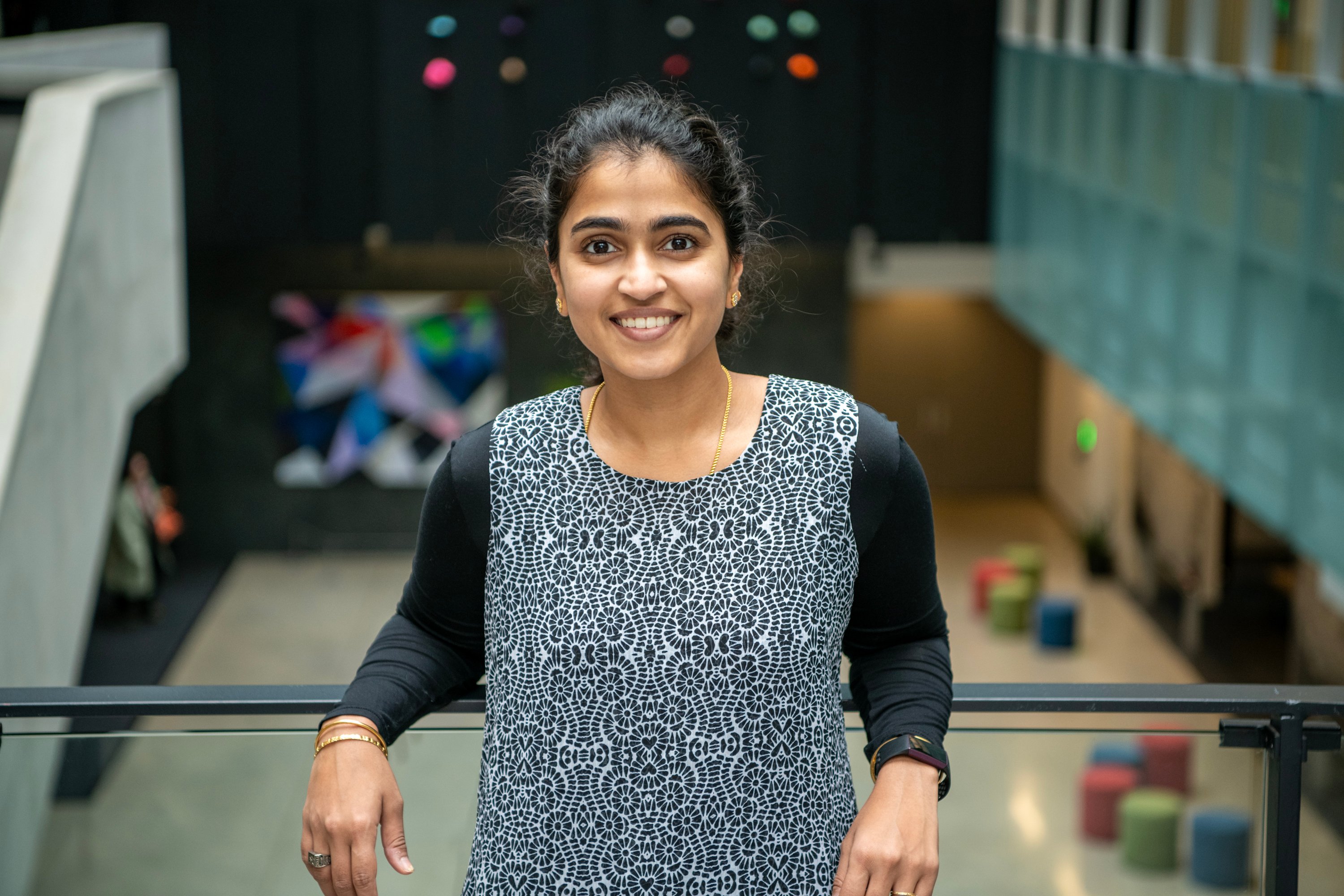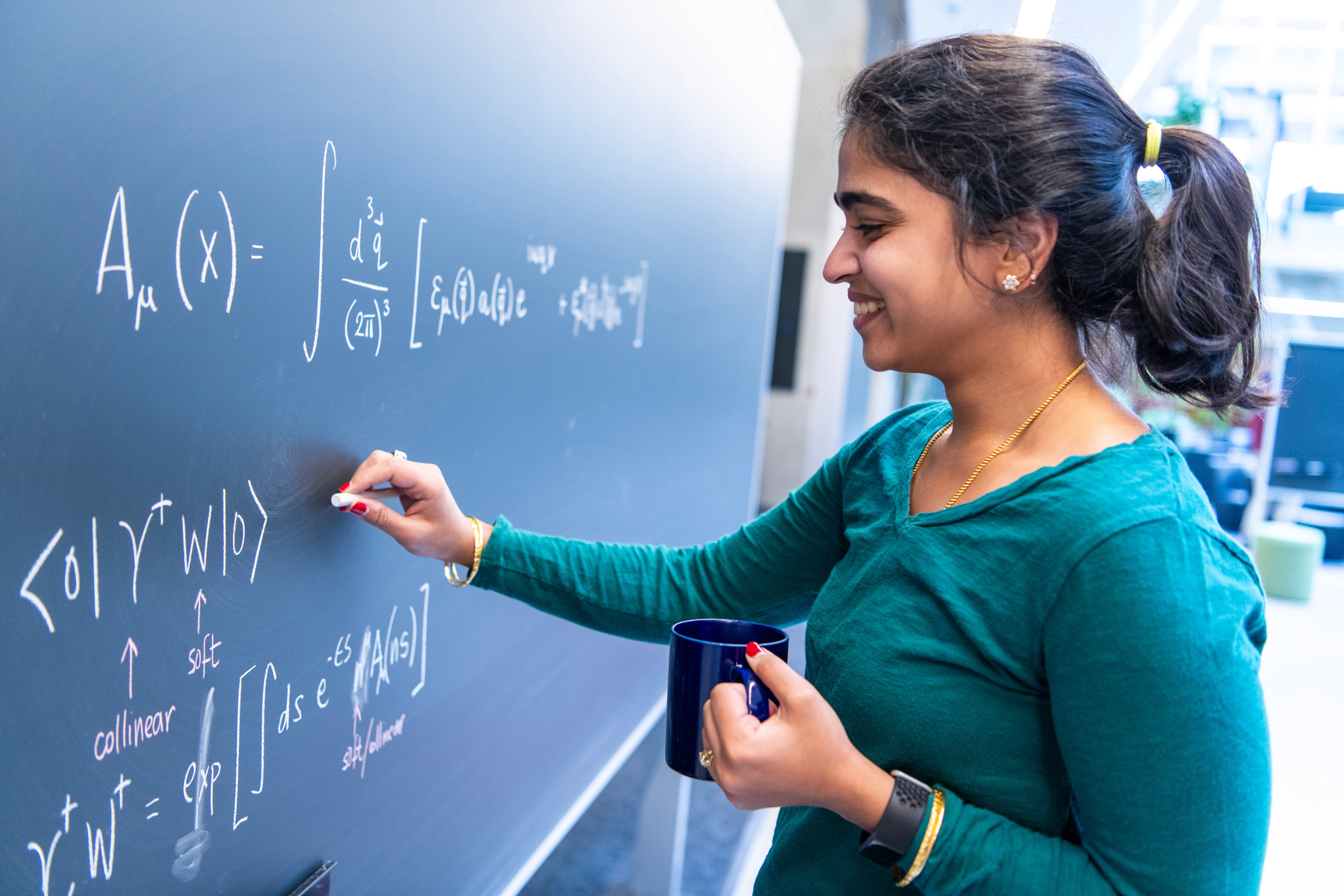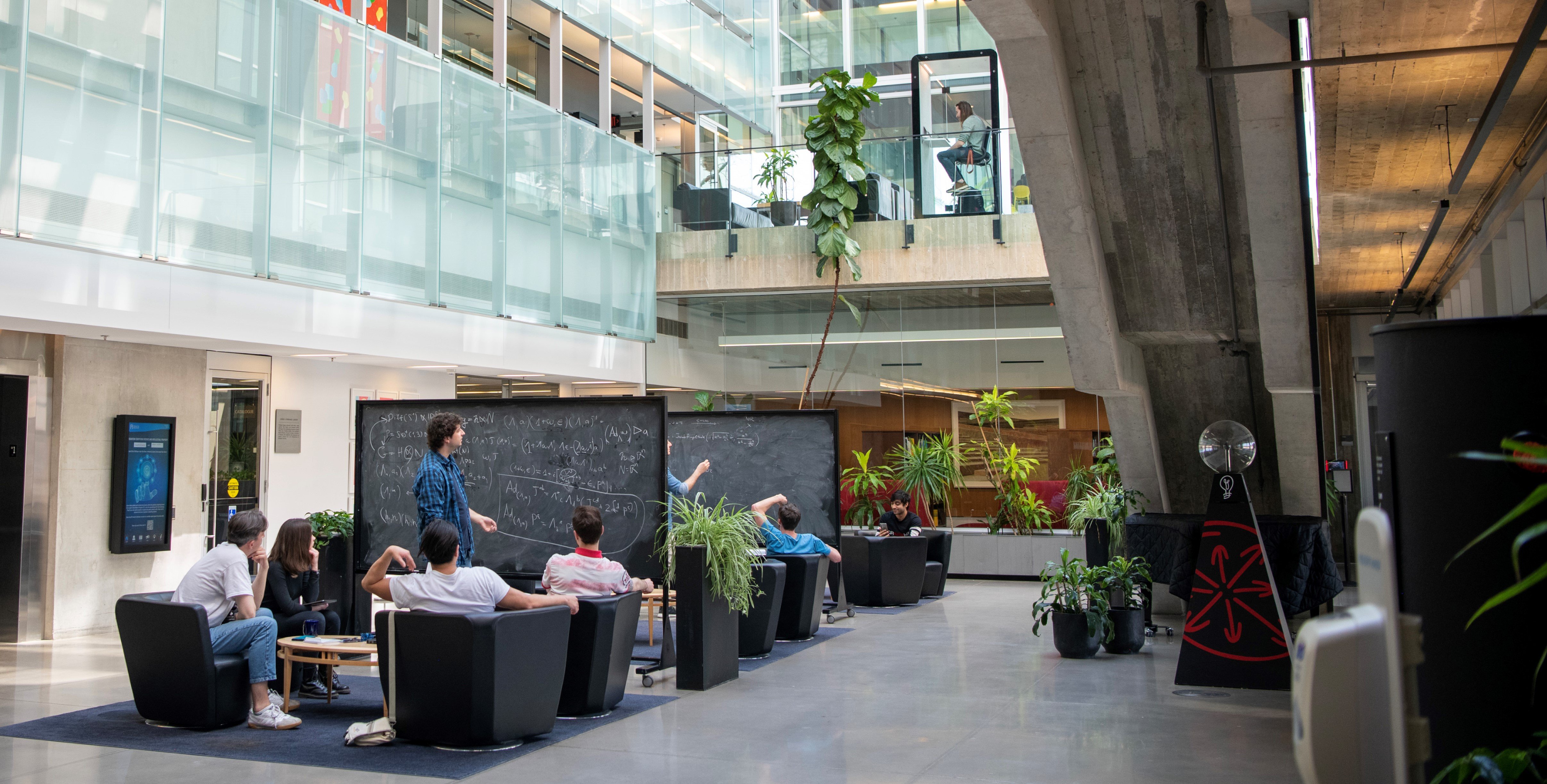In Douglas Adam’s sci-fi classic, The Hitchhiker’s Guide to the Galaxy, language barriers don’t exist thanks to the Babel fish; a small, yellow creature that lives in the ear and translates soundwaves into the listener’s native language. Unfortunately, we’ve yet to come up with an equivalent solution for the real world – so translation books and devices remain a must-have when travelling.
When it comes to physics, even when everyone is speaking the same language, translating findings from one subfield to the next occasionally poses a challenge. There are even cases where physicists speaking about the same phenomenon express it using different words and equations – sometimes unknowingly.
“I think it’s worthwhile for a group of people to sit down and say, you’re talking about this and I’m talking about that, but we’re actually talking about the same thing,” says Sruthi Narayanan, a postdoctoral researcher at Perimeter Institute. “We would benefit so much from being able to talk to each other.”
Narayanan studies quantum fields and strings at Perimeter. Her doctoral thesis focused on celestial holography – one promising path to uniting quantum mechanics with general relativity. But her interests also extend into quantum chromodynamics, the study of the strong force that holds the nucleus of atoms together. Since coming to Perimeter, she’s “tried to use all the tools in her toolbox” to push her research into new directions.
Following those interests has led her down an interesting path: trying to translate terms from celestial holography – which reside firmly in the realm of theoretical physics – to observable outcomes from high energy collider experiments like at the Large Hadron Collider.
“What we are trying to translate is the definition of certain calculable quantities,” says Narayanan. “On both sides, we’re calculating mathematical quantities that go by different names, are calculated differently, and have different motivations – but if you look at them closely, you realize they are actually related to each other.”
To try and solve this problem, Narayanan is building on foundational work by physics luminaries who grappled with it more than a decade ago.
The fundamental connection between the two fields was first recognized in a 2008 paper by Diego Hoffman and Juan Maldacena. The pair explored the observable results from energy detectors at collider experiments within the context of conformal field theory.
Like any field theory, conformal field theories try to explain the behaviour of quantum particles (like those being smashed together and scattered in colliders), but these theories follow specific rules. They preserve certain symmetries when changes are applied to them, such that angles are preserved, but not necessarily distance, for example. These rules make conformal field theories play unusually nice with theories of gravity, and conformal field theories are often described as existing on the boundary of a gravity-filled universe. This is why they hold such interest for holography experts.
“Everything we work on in celestial holography has to do with a conformal field theory on the boundary,” Narayanan says. “There’s a connection that naturally arises.”
Narayanan is exploring that connection further. Her first translation challenge involved trying to show that an expression from the collider physics world, the ‘average null energy operator’ is related to what the celestial holography literature labels ‘hard charge’.
Hard charge is calculated from a theorem by Emmy Noether, one of the foremost German mathematicians of the twentieth century. It comes from splitting a conserved charge into two parts: a soft part and a hard part. The soft part realizes the addition of the soft particle, while the hard part shows the effect of that soft radiation on the energetically hard particles in the scattering process, says Narayanan.
“The hard charge that we write down, which has been very useful in celestial holography, can be explicitly related to the average null energy operator,” says Narayanan. This connection was shown in a 2022 paper published by Yangrui Hu and Perimeter faculty researcher Sabrina Pasterski, and independently verified by Narayanan herself using a different mathematical method.
Next, Narayanan is working to translate an expression that shows up in both fields. On the collider side, the ‘operator product expansion’ is important for connecting to experimental observables. On the holography side, it is a defining factor for a conformal field theory.
“Our hope was to say, if we have a map between these two operators, can we connect the operator product expansion data on either side,” explains Narayanan. That’s left Narayanan computing from the celestial side with the goal of eventually porting that information back to the collider researchers.
As for the reaction from the collider community, Narayanan says that folks are excited to make a connection. In particular, the collider world is interested in how results could extend to understanding quantum gravity – essentially the holy grail of physics research – and quantum chromodynamics, which aims to describe the strong force, one of the fundamental forces of nature.
Aside from her own interest, there’s a personal tie connecting Narayanan to quantum chromodynamics: her dad.
“He works on lattice quantum chromodynamics. That’s what he’s been doing for his whole career. He’s actually the one who taught me what I know about quantum chromodynamics, and a lot of what I’ve worked on in that research area has been with him.”
For now, creating her ‘translation book’ is connecting Narayanan with lots of fun people at conferences and workshops, she says. Pursuing this translation requires collaboration with scientists who study a subset of high energy theory called phenomenology. Phenomenologists try to understand physical processes from a theoretical side. They build models, Narayanan explains, based on experimental data. “They’re one step closer to the data than we are, but not as close as an experimentalist would be.”
She acknowledges that the cross-discipline environment at Perimeter has helped foster her ability to collaborate and explore diverse topics.
“It was nice in my PhD to have something very concrete that was well-set and planned out and easy to work with,” she says. “But I found myself at the end having a multitude of questions. Being at Perimeter fosters that kind of curiosity because there are so many people here thinking about so many different things.”
The translation work is still underway, but the exciting thing is that there is no telling yet what insights it might bring. A physics Babel fish is an exciting prospect, and it’s bringing together scientists from across the broad spectrum of physics researchers worldwide.
À propos de l’IP
L'Institut Périmètre est le plus grand centre de recherche en physique théorique au monde. Fondé en 1999, cet institut indépendant vise à favoriser les percées dans la compréhension fondamentale de notre univers, des plus infimes particules au cosmos tout entier. Les recherches effectuées à l’Institut Périmètre reposent sur l'idée que la science fondamentale fait progresser le savoir humain et catalyse l'innovation, et que la physique théorique d'aujourd'hui est la technologie de demain. Situé dans la région de Waterloo, cet établissement sans but lucratif met de l'avant un partenariat public-privé unique en son genre avec entre autres les gouvernements de l'Ontario et du Canada. Il facilite la recherche de pointe, forme la prochaine génération de pionniers de la science et communique le pouvoir de la physique grâce à des programmes primés d'éducation et de vulgarisation.



